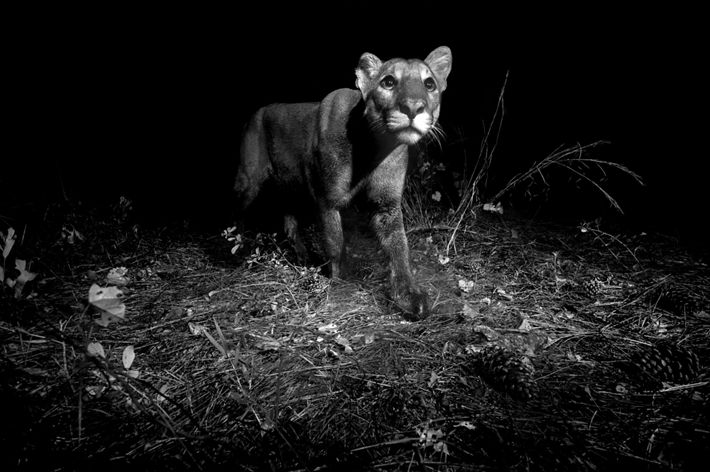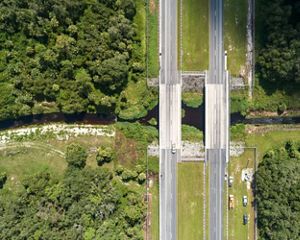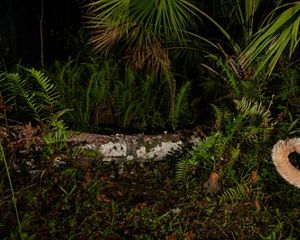Help Save the Florida Panther
We're protecting critical habitat for this extremely endangered animal—and you can help.
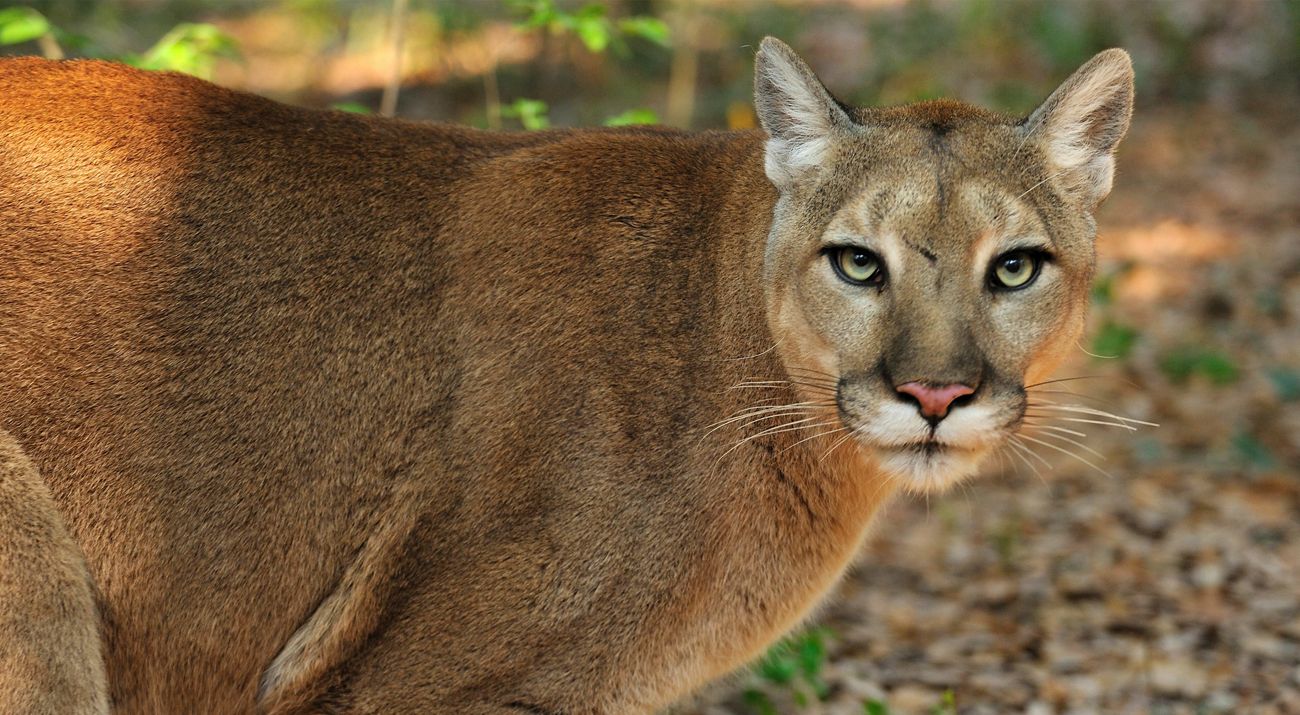
Panthers Need Connected Habitat to Survive
When the Florida panther was included in the Endangered Species Act in 1973, there were fewer than three dozen cats remaining in the wild.
Today there is great reason to be hopeful: Panthers now number close to 200, finally roaming safely on expanded territory protected by TNC.
Collaboration with private landowners and the purchase of property development rights through conservation easements is a cornerstone of TNC's strategy to protect lands that provide what panthers need. Essential land within the panther corridor is now protected along both banks of the Caloosahatchee River, thanks to member donations.
For the panther, expanded and protected habitat is only a short swim away.
Giving Panthers a Safe Place to Roam
In 2017, TNC announced the protection of Cypress Creek Grove, the first protected tract on the northern bank of the Caloosahatchee River in the heart of the panther corridor. This important location has been safeguarded from future development.
Owned by Falcon Eyrie Farms, LC, the 460-acre property is the first working citrus operation in the state to commit to panther protection with TNC, and the conservation easement is the first located in the panther corridor funded exclusively by member donations.
Cypress Creek Grove is located across the Caloosahatchee River from the 1,257-acre Lone Ranger Forge/American Prime property to the south, also protected by a conservation easement with TNC and additional easements with state and federal agency partners.
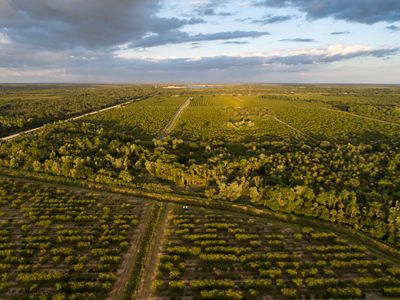
These easements were put in place just in the nick of time—the day before the property was set for a foreclosure sale. Lone Ranger Forge connects along its southern border with the 1,527-acre Black Boar Ranch, protected in 2015 by conservation easement with TNC, with assistance from the U.S. Department of Agriculture. These three easements now ensure 3,244 acres of Florida Panther habitat remain intact and permanently protected.
Panther Facts
Did You Know?
- The panther (Puma concolor coryi) is one of two wild cat species found in Florida. The bobcat (Lynx rufus) is the other.
- Panthers can leap more than 15 feet and can run 35 miles-per-hour for short distances.
- Males weigh 100–160 pounds and can be 7 feet long from nose to end of tail. Their tails can be nearly two-thirds of their body length.
- At birth, the cubs weigh just 4–8 ounces. That’s less than a one-month-old house cat.
- Wild hog, white-tailed deer and raccoons comprise 70 percent of a panther’s diet.
- Only 12–20 panthers existed in the early 1970s in Florida. Our efforts are making a difference!
TNC continues to support panther conservation and acquisition of lands containing critical habitat. TNC's easements are within the area identified by the U.S. Fish and Wildlife Service (USFWS) and Florida Fish and Wildlife Conservation Commission (FWC) as important to panther land connectivity and expansion, and adjacent to lands identified for future conservation by the Florida Forever program, which purchases and conserves natural lands.
The northern boundary of Cypress Creek Grove connects directly to an area currently highly ranked on the Florida Forever Priority List. We’re working to encourage legislators to support Florida Forever funding. Without it, the lands on the Priority List may not receive funding quickly, and the panther needs our help now.
Panther Ponderings
Things to know about protecting the endangered panther
-
Why is panther habitat expansion so critical?
Their current habitat is simply too small and fragmented for the population to grow to a healthy and sustainable level. Males defend territories of 200 square miles and a single female will establish a home range of 75 square miles. Burgeoning development, ever-busier highways and habitat degradation are creating more fragmentation of already restricted habitat. USFWS's Florida Panther Recovery Plan includes the need to establish additional breeding populations outside of south Florida.
-
What other threats do Florida panthers face?
In addition to threats created by limited habitat and vehicle strikes, panthers are impacted by disease, genetic issues, reduction in available prey, and intraspecies aggression (fighting and competition between panthers over limited territory). The combination of these factors pushes the panthers closer towards extinction.
-
What is being done to help Florida panthers?
TNC is leading an effort to conserve panther habitat by establishing connections to existing protected lands, that encompass a variety of habitat types, from native lands to working lands. We’ve protected thousands of acres of prime panther habitat within the Greater Everglades as well as those in the panther corridor near the Caloosahatchee River. TNC is determined to build on this foundation by protecting and restoring key landscapes. How we've already helped.
-
What can you do to save Florida panthers?
You can help us safeguard lands that link existing managed areas to create a larger protected home range for panthers. Support our work to protect prime panther habitat by making a donation which will help us protect critical lands, foster greater public understanding, and tackle land use planning challenges. You can also encourage your legislators to support land acquisition programs such as Florida Forever and the Rural and Family Lands Protection Program. Make a Donation Now
Help Save the Florida Panther
We're protecting critical habitat for this extremely endangered animal and you can help. Act now to save the Florida panther.
